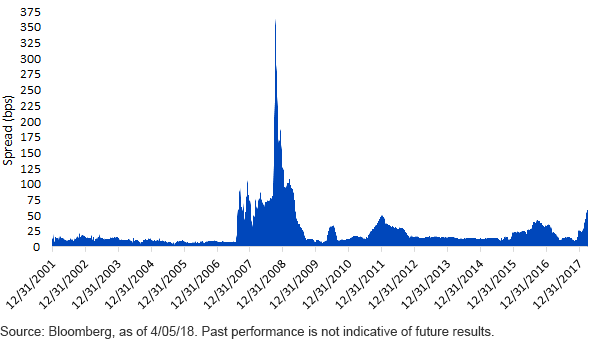In late December, I wrote a piece, “LIBOR's Fate: Could It Be Real This Time?,” about the announcement last summer that this widely used borrowing benchmark would be discontinued at the end of 2021. Well, LIBOR is back in the news, but this time for a different reason. Given the influx of questions I've received in the last couple of weeks, I thought it would be a good idea to share some thoughts.
The headlines this time around have nothing to do with LIBOR's fate but, rather, its noteworthy move to the upside in a very short period of time. Certainly, the direction of three-month LIBOR can be affected by federal reserve (Fed) actions, and, in this case, the policy makers did implement another 25 basis point (bps) increase in the Fed Funds Rate at last month's FOMC meeting. While this rate hike may help to explain some of the increase since year-end, it is only part of the story, as the three-month LIBOR rate actually has risen 63 bps thus far in 2018. If you go back to the end of September, the increase has been roughly 100 bps, with the cumulative Fed rate hikes representing 50 bps since then, or only half of the overall rise.
Three-Month LIBOR–OIS Spread

Naturally, that raises the issue of what other forces could be at work here. Perhaps the most important factor lies in the U.S. Treasury's financing needs. As Treasury's borrowing requirements began to surge for fiscal year 2018 (and for the next few years beyond), the nation's debt managers needed to utilize Treasury's basically full arsenal of bills, notes and bonds to meet the burgeoning task at hand. Typically, t-bills are the workhorse in such instances. These instruments are used to address the changing financing needs of the federal government, and, given their short-term nature and the weekly auction schedule for the one, three and six-month maturities, Treasury turns to the bill sector for more-effective debt management.



